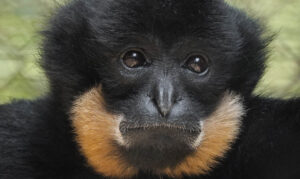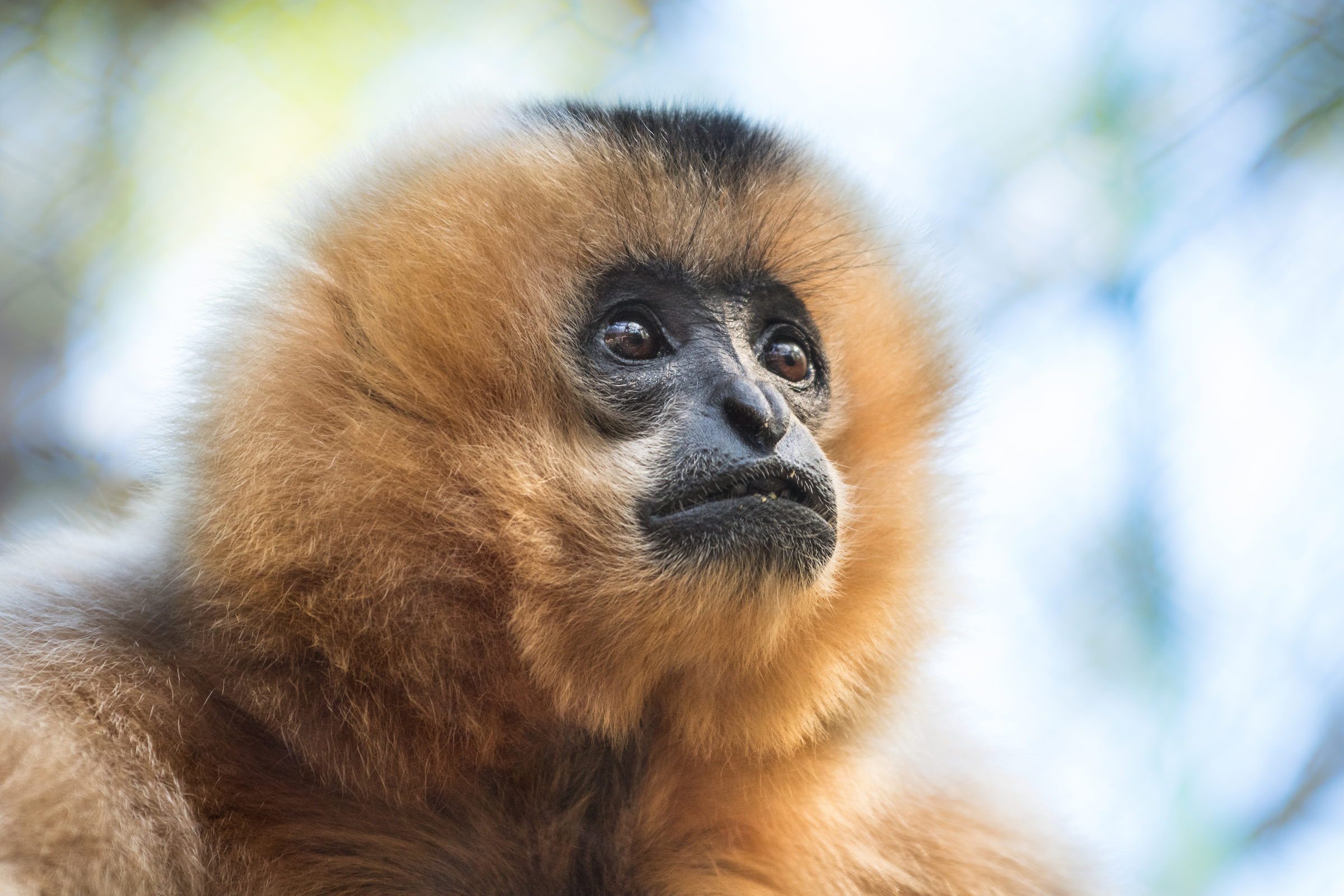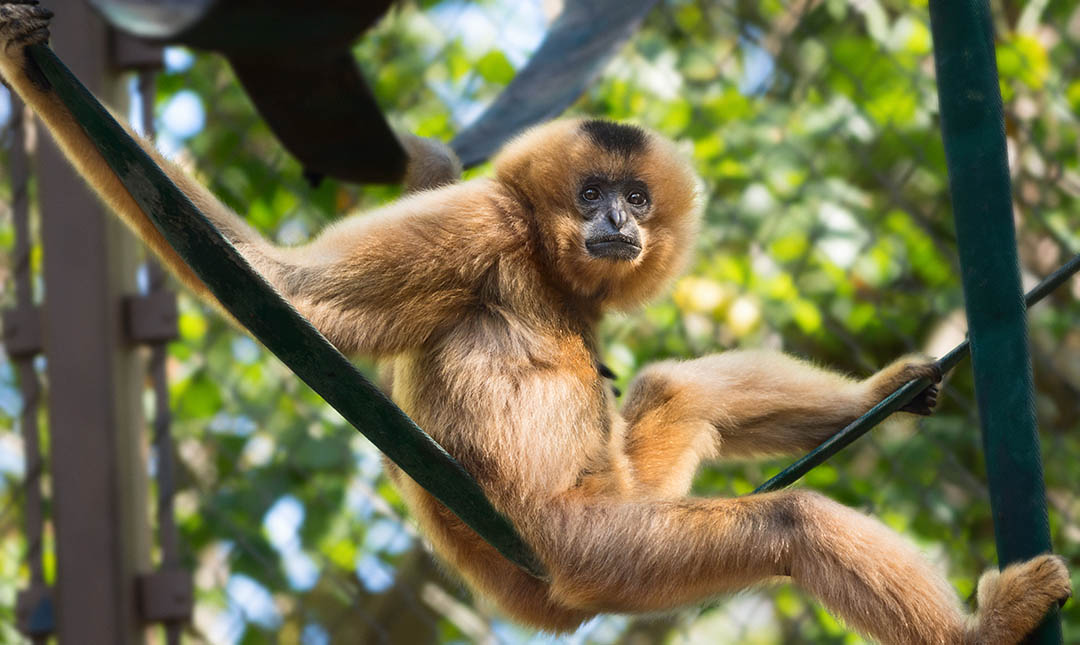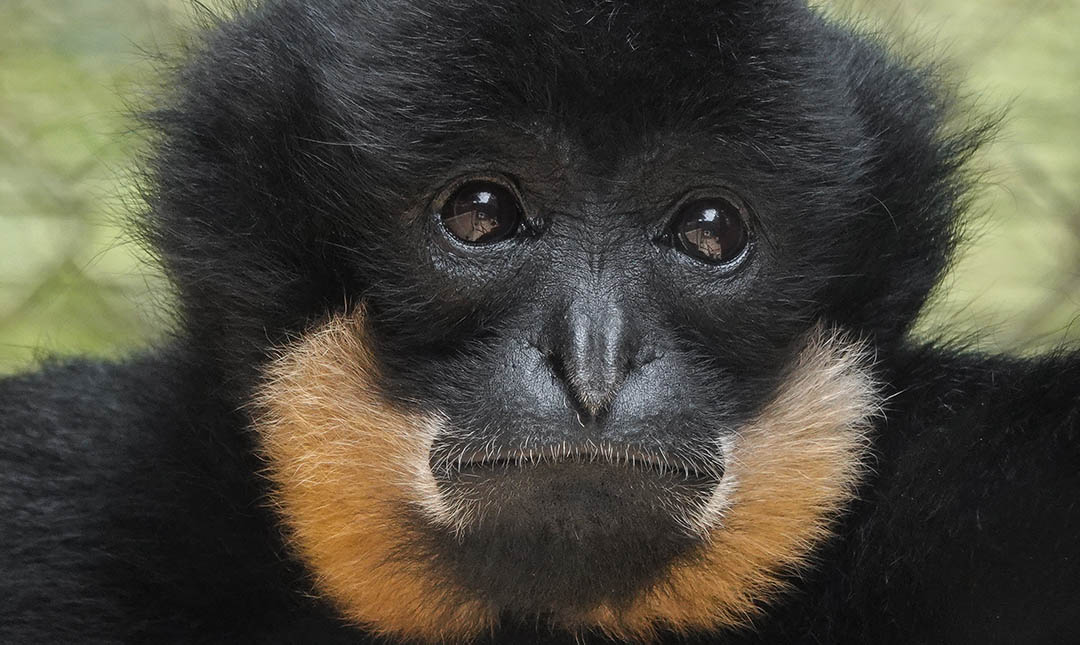About
Gibbons are small apes from Southeast Asia. They are famous for their loud calls, which can be heard up to two miles away. Some calls sound distinctly like car alarms while others are whoops, barks, and hoots. Pairs typically sing duets early in the morning to announce their territory. The male concludes his song with aerial acrobatics. Gibbon calls are species-specific, however, females generally make ascending calls, while males use territorial barks and hoots. Singing is essential in forming and maintaining pair-bonds. Younger, solitary males sing to find mates. Gibbons have a predator song to warn other gibbons in the area. Predators include tigers, leopards, and pythons.
Gibbons’ arms are much longer than their legs, and, using an arm-over-arm swinging movement called brachiation, they can swing faster through trees than a person can run on the ground. They can leap 40 feet at speeds of 35 miles per hour while 200 feet above the ground. Their small thumbs allow their long fingers to hook over branches, making it easy to swing from branch to branch. They occasionally walk upright (bipedally) on branches or on the ground using their arms for balance. They spend most of their time in the crown (upper part) of the forest canopy and sleep in the forks of branches at night.
Gibbons play an important role in maintaining the health of the forests in which they live. Consuming mostly fruit, they are vital seed dispersers. Gibbons usually forage throughout the day, but feed mostly in the morning. They live in small family groups consisting of a mated pair with up to four dependent offspring. Females are pregnant for seven months, and typically give birth to one infant born with buff-colored hair like its mother. The infant’s color changes to black at about six months. Males stay black, but females change back to buff. Offspring stay with their family for six to eight years, after which they move or are chased away so they can start their own families.


Habitat
Buff-cheeked gibbons inhabit the forests of Southeast Asia including Vietnam, Laos, and Cambodia.
Diet
These apes are omnivorous, eating fruits, leaves, insects, birds, and eggs.
Physical Characteristics
These apes are about two feet in height and weigh roughly 18 pounds. Their lifespan is up to 50 years.
LOCATION WITHIN THE ZOO
You’ll find this animal in the Africa section. See Zoo Map.



